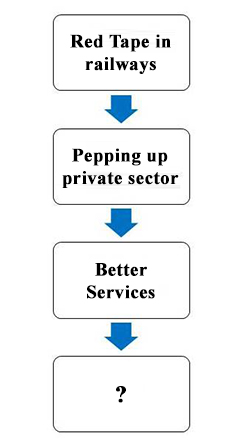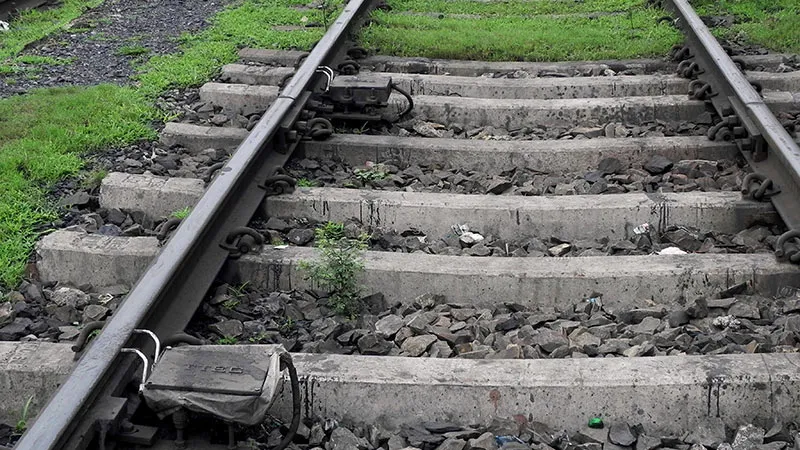The 28 million passengers who use the Indian Railways daily fear March as much as ancient Romans feared the Ides of March. This is when the prospect of the impossibly low rail fares being hiked looms, and then usually abates, as political parties compete to “safeguard the people’s interest”. Indian Railways charges passengers, on average, just 29 paise per kilometre of travel, whereas in China passenger fares are four times higher. The Railways lose around Rs 30,000 crore annually from carrying passengers, but makes up some of that by charging freight rates that are almost double the cost incurred. In China, freight rates are around half of ours. Add to this better roads, bigger trucks and fierce competition, and you can see why road transport has weaned rail freight away. The golden goose of freight revenue funding the Railways is dying.
Indian Railways increased passenger fares in June 2014 by six per cent soon after the Narendra Modi government took charge. The Opposition outcry was fast and furious. Around 20 million vocal suburban commuters, a critical votebank, use trains as a lifeline in Mumbai, Kolkata and Delhi. The Delhi Metro hasn’t revised tariffs since 2009. This ranges from Rs 10 to Rs 30 for secure, fast, airconditioned travel with sparkling terminals. And yet commuters who cavil at the cost think nothing of getting into a shared autorickshaw and paying Rs 20 for a 2-km slow, pollution infused ride home. Suresh Prabhu, who took over as railway minister in November 2014, is a battle-hardened, savvy veteran at reforming utilities from his days as power minister in the Atal Behari Vajpayee government. Learning from his predecessor, his first Railway Budget in 2015 skirted around the vexed issue of hiking tariffs. His second budget, in 2016, was no different, except that he had developed a track record for delivering on passenger amenities — on cleaner coaches and stations, digital food orders; better on-time arrivals and departures; easier freight booking/handling; and a minister-on-tap app, that has almost become the leitmotif of the Modi government.

Even last Saturday, addressing the Indian Merchants Council in Mumbai, Mr Prabhu gave no hint of the thunderbolt he would unleash on September 7, with the new “flexi-fare scheme” for Rajdhani, Duronto and Shatabdi trains. To call this a “surge pricing” scheme, as most of the media has done, contrasting it with state governments banning flexi fares for radio taxis, is a little misleading. “Surge pricing” transmits both benefits when demand is low and higher costs during peak demand. There is very little “flexi” in the Railways’ scheme. Fares, even if trains are empty, will never fall below existing rates. The railway flexi fares only incentivise travellers to book well in advance, as the base fare increases by 10 per cent after every block of 10 per cent of available seats gets booked. There is a cap of 40 per cent hike for AC-3 — possibly because this category, even at existing rates, is the most profitable for the Railways.
For all other passengers there is a 50 per cent cap on hiked fares, including for those travelling in non-airconditioned sleeper class (2S or SL) on fast premium trains. It is this last category that is interesting. These are truly the aam aadmi or students, who take a bus or shared auto home on reaching their destination rather than a taxi. By making even them pay what it costs for secure, fast, inter-city travel, Mr Prabhu has set the right tone for the inevitable future increases. After all, if one’s time value is low, shouldn’t one be taking a slow train instead at cheaper rates? So why is Mr Prabhu trying to do a Ronald Reagan rather than playing with a straight bat? Why so much secrecy in tariff hikes, with no explanation of how the new rates relate to the cost of providing the services. Mr Prabhu is a master communicator, but the Railways appear to be still mired in a colonial mode.
Independent electricity regulators set up when Mr Prabhu ran the power ministry set tariffs transparently. The costs of offering different services and corresponding tariffs proposed by utilities — mostly publicly owned, like the Railways — can be downloaded from the Internet or a copy obtained from the commission. Then consumers can individually or collectively file comments and/or objections to the proposed tariffs. The process is transparent, access to information is assured and participation is facilitated. This is because Parliament legislated such provisions in specific laws relating to telecom and electricity. The Railway Act 1989 also provides for a Railway Rates Tribunal to set tariffs in a quasi-judicial manner. This has never been operationalised by previous governments. Mr Prabhu said in his 2015 Budget speech that an “independent mechanism” for comprehensive regulation of the railway sector is needed. This is significant as it acknowledges that a precondition for bringing private capital and enhancing competition is the hiving off of regulatory powers from Indian Railways.
The exhaustive Bibek Debroy Committee Report of June 2015 on restructuring the Railways similarly strongly backed such a regulatory system. But the elusive search for the best appears to have come at the expense of the good. Even in the absence of a regulator, the government could have engaged directly with the public before a tariff increase. But the surcharged political atmosphere, with two major state elections around the corner and the prospect of delay, may have dissuaded it from opening a window for political protests. But someone needed to bell the cat. In this country’s political shadow play, a proposed rate hike inevitably incorporates a rollback margin. So hope for a rollback in the cap from a 50 per cent increase to a cap of possibly 25 per cent. But be prepared for an era where the railway station is no longer the place to look for a free lunch.
This originally appeared in The Asian Age.
The views expressed above belong to the author(s). ORF research and analyses now available on Telegram! Click here to access our curated content — blogs, longforms and interviews.





 PREV
PREV


